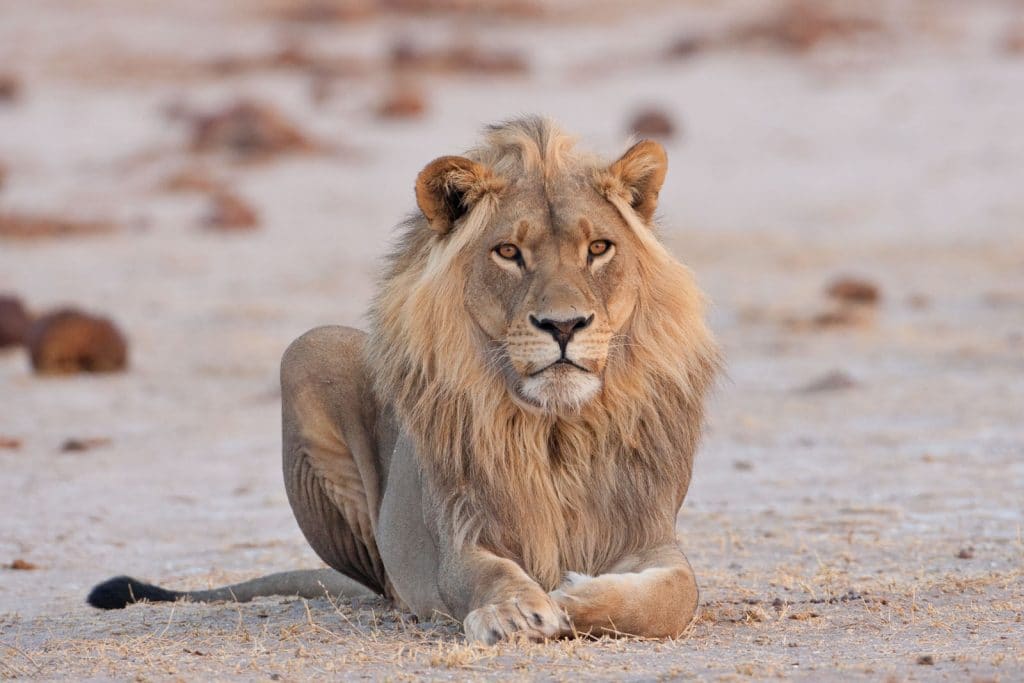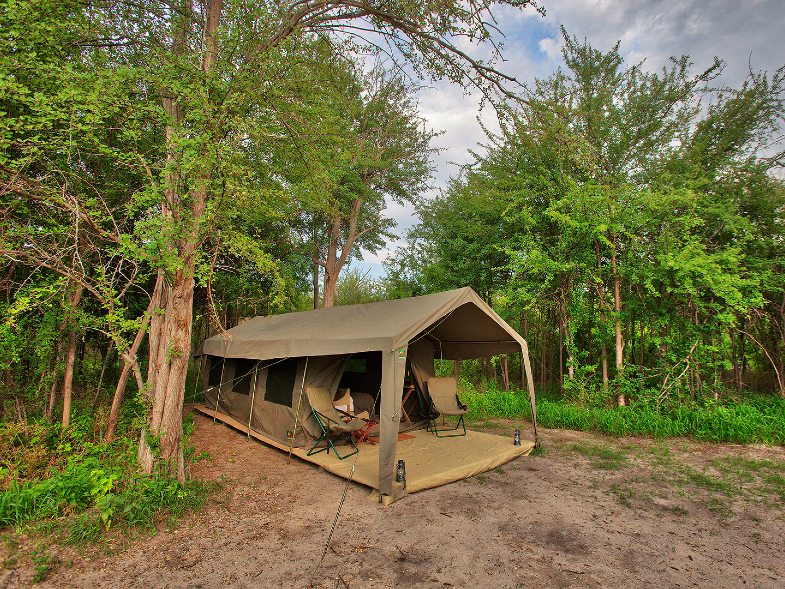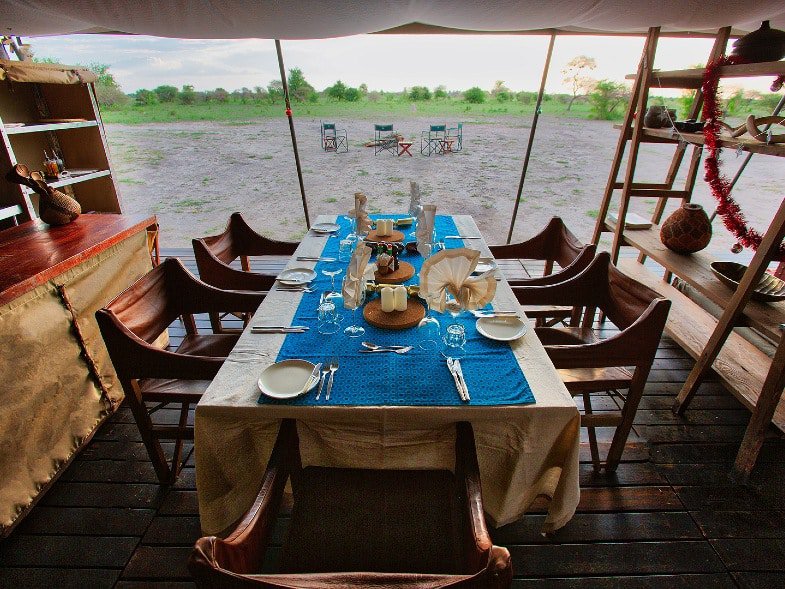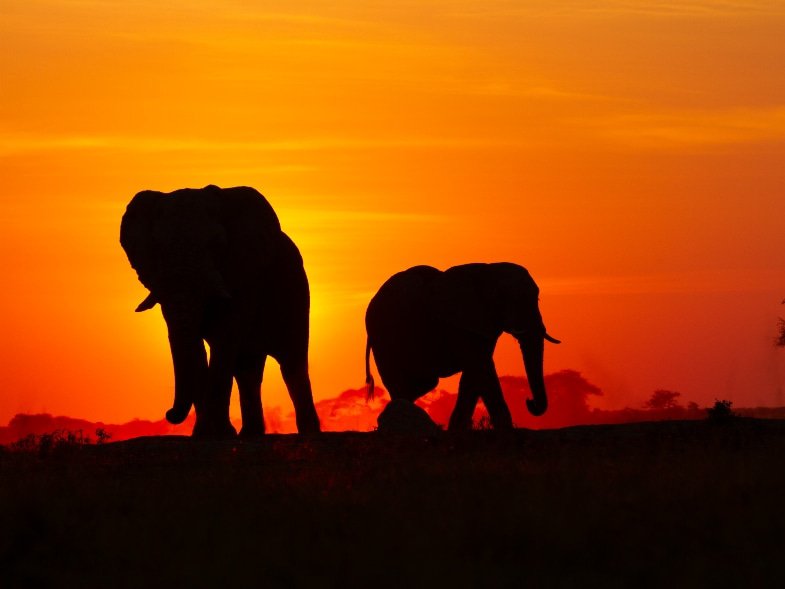Formed out of a prehistoric lake bed, the Nxai Pans is a land of contrast. Flat salt pans stretch as far as the eye can see, with fringes of waist-high grass and thorny acacia trees. It’s home to vast baobab trees, millions of birds, as well as herds of migrating zebra, and the predators that accompany them.
Part of the Makgadikgadi Pans, Nxai Pans is a conservancy where animals have free range between Nxai and the Makgadikgadi Game Reserve. One of the most remote destinations in the world, this is a land without modern amenities. Cut off from the internet, phone calls, and without WiFi, this is a camping expedition in true pioneer style.
Our adventurous Group Head of Digital, Julien Perreard, recently joined Migration Expeditions to experience it for himself.

How did you get to Nxai National Park?
From Cape Town, we flew to Maun in Northern Botswana where we were whisked away by Helicopter Horizons to the Nxai National Park. From the gate to the Park, we drove to the current location of the nomadic camp. Park rules state that any camps must move every six nights, in order to put as little strain on the natural environment as possible. We stayed for three nights.

How did you find the camp?
On arrival, the staff welcomed us with traditional songs and we lounged around the campfire enjoying the extensive bar selection. The camp is made up of six luxury Meru-style tents that can house up to 12 people. Each tent has its own en-suite bathroom with traditional safari-style bucket showers — quite an experience for the uninitiated!
As we were out in the unfenced bush, we were asked to stay close to the camp. Rumour has it that lions sometimes ventured close to camp, but luckily the only wild friend we made was a curious jackal who watched us from the bushes.


Did you see any interesting wildlife?
We were there early in the season, during the zebra migration. The massing herds were joined by lions and cheetah, taking advantage of their swelled numbers. We also spotted many impala, springbok, and oryx, as well as giraffes and elephants.
We were told about the beginning of the rainy season when the short grass plains attract thousands of zebra. We even saw wild dogs in the scrublands along the road to our camp! The birdlife was just incredible; we were even lucky enough to see the grey Crowned Crane with its characteristic golden ‘crown’ of feathers. Quite a sight!
The salt pans are an incredibly fragile eco-system and to protect it, the park rules are very strict. We stayed on the roads and there are no nighttime drives.


You mention the scrublands and the pans. What is the terrain like?
This is a diverse environment. From the salt pans and their fringe of waist-high grasses to acacias and the edges of the mopane forest, there is a range of habitats. When the rains come grass grows on the pan attracting the vast herds that are what makes this region so incredible to visit during the rainy season. The region is also home to the natural wonder of the Sleeping Sisters, also known as Baines Baobabs.

What stood out during your time at Nxai?
Definitely Baines Baobabs — they are massive! The story goes that an English explorer and painter named Thomas Baines went on an expedition to find the Victoria Falls in 1861. On the way, he found these enormous baobab trees. Thomas painted the trees which later became known as the Baines Baobabs.
We drove for about an hour and a half to get to the trees from our camp. The grove rises out of the surrounding salt pans like a group of prehistoric monuments. Each enormous tree feels more like rock than wood, some reaching up to 30 metres into the sky and up to 11 metres in circumference.


Who would you recommend this destination to?
Nxai Pan is the ideal location for a traveller looking to totally disconnect from life. No WiFi, no cellphone connectivity, and plenty of adventure. It’s perfect for the adventurous traveller looking for the road less travelled, for more unusual experiences.

Any final comments?
Head to Nxai Pan during the green season — between December and March. It’s one of the few locations in Botswana that’s better during the rains. If you’re combining a visit to both the desert and the Delta, start off with the Nxai Pan to make the most of both destinations.

